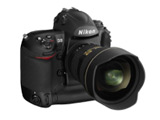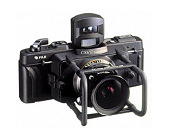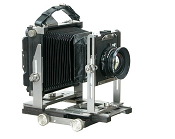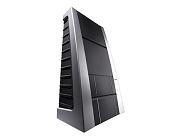Techniques and photo equipment:
Shooting
By the way, for those interested, I use a wide range of digital and film cameras (Nikon, Pentax and Mamiya medium format, Fuji GX 617 panoramic (90, 180, 300 mm) and an Ebony SW45 large format camera. My lenses go from 14 mm to 500 mm Nikon, Pentax, Mamiya, Fuji, Schneider). Technical challenges and diverse cameras were among the joys of photography to me, but alas film is now difficult to find and develop, very expensive, and doesn't seem a very viable option for a pro photographer.
In favor of digital (I currently use a Nikon D5 and a D850), there is ease of use, speed, compactness and flexibility (immediate control of the outcome and exposure, access to high sensitivity). It would be difficult to do without it for wildlife, sports, and a number of other applications.
Scanning and image processing:
I scan my films with the best currently available professional scanner, the Hasselblad X5, for perfect results in very high definition. Some scanned images can deliver 25 000 px in the widest dimension. But stitched digital images can deliver the same now, with even more details.
|
|
|
|
 |
 |
 |
 |
| Nikon D5 (digital full frame) |
Fuji GX 617 (6x17 cm) |
Ebony SW45 (4x5 pouces) |
Scanner Hasselblad X5 |
This high-end X5 scanner (Virtual drum technology patented by Imacon) is used by the best photo agencies. For maximum performance my own scanner is calibrated using a 4x5 large format slide target (individually measured), to further optimize dynamic and color accuracy of the scanner.
My digital files (RAW files always) are developed with Lightroom CC , an excellent software which has evolved a lot in recent years. A few years back I was more satisfied with Capture One, which delivered more pleasing colors in landscape photography to my eyes, but now Lightroom CC has all that a pro photographer could desire.
|